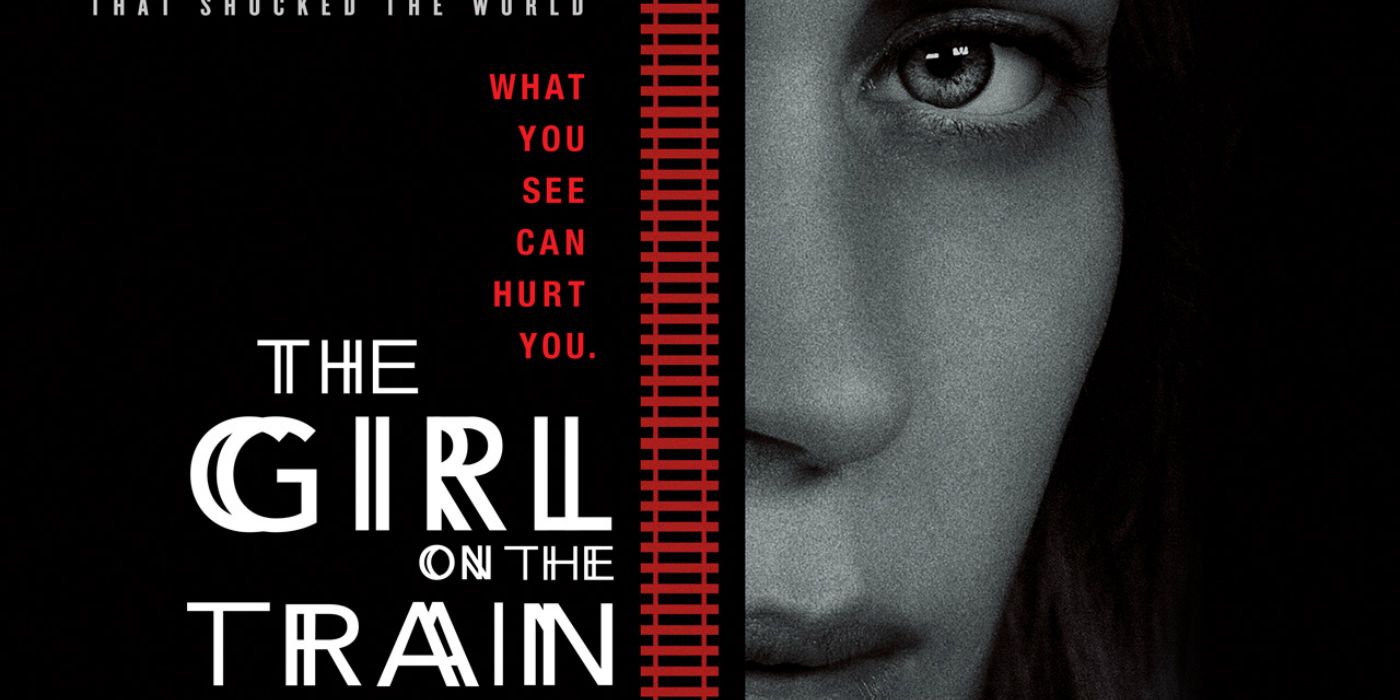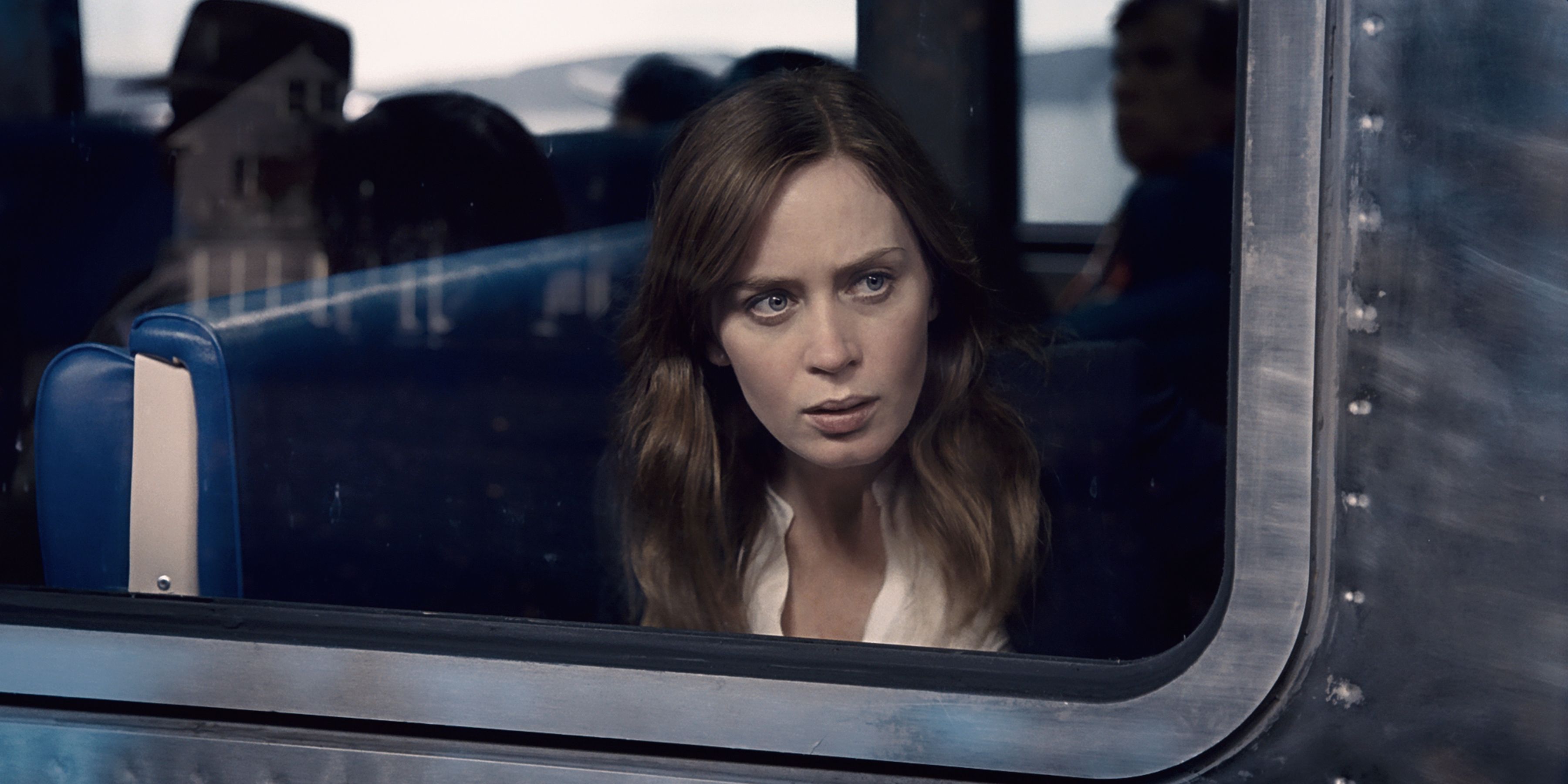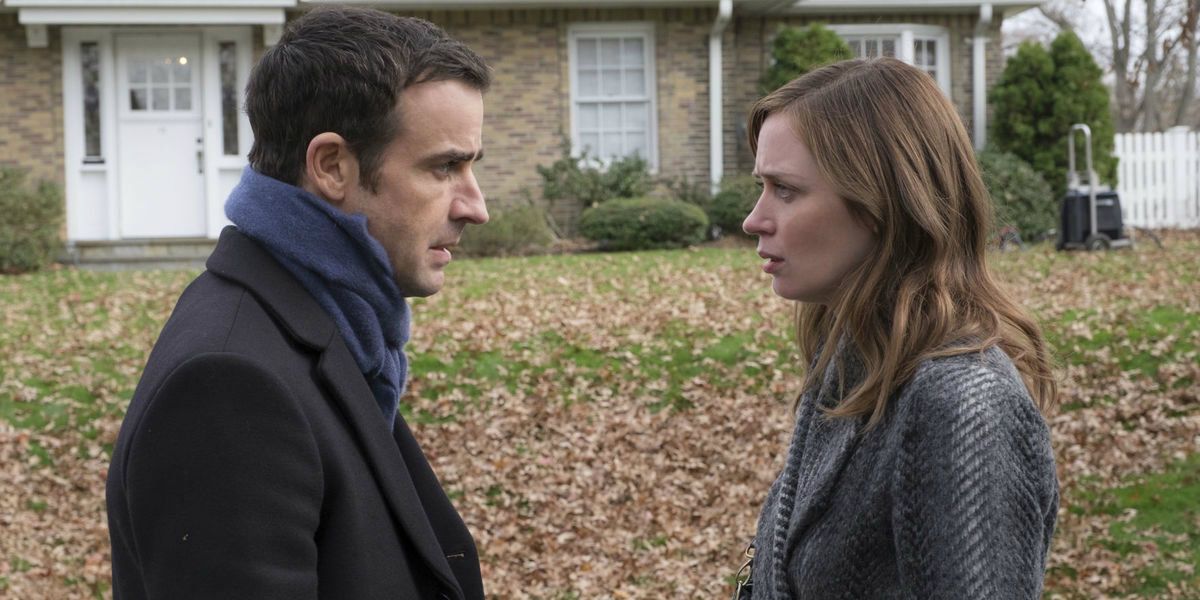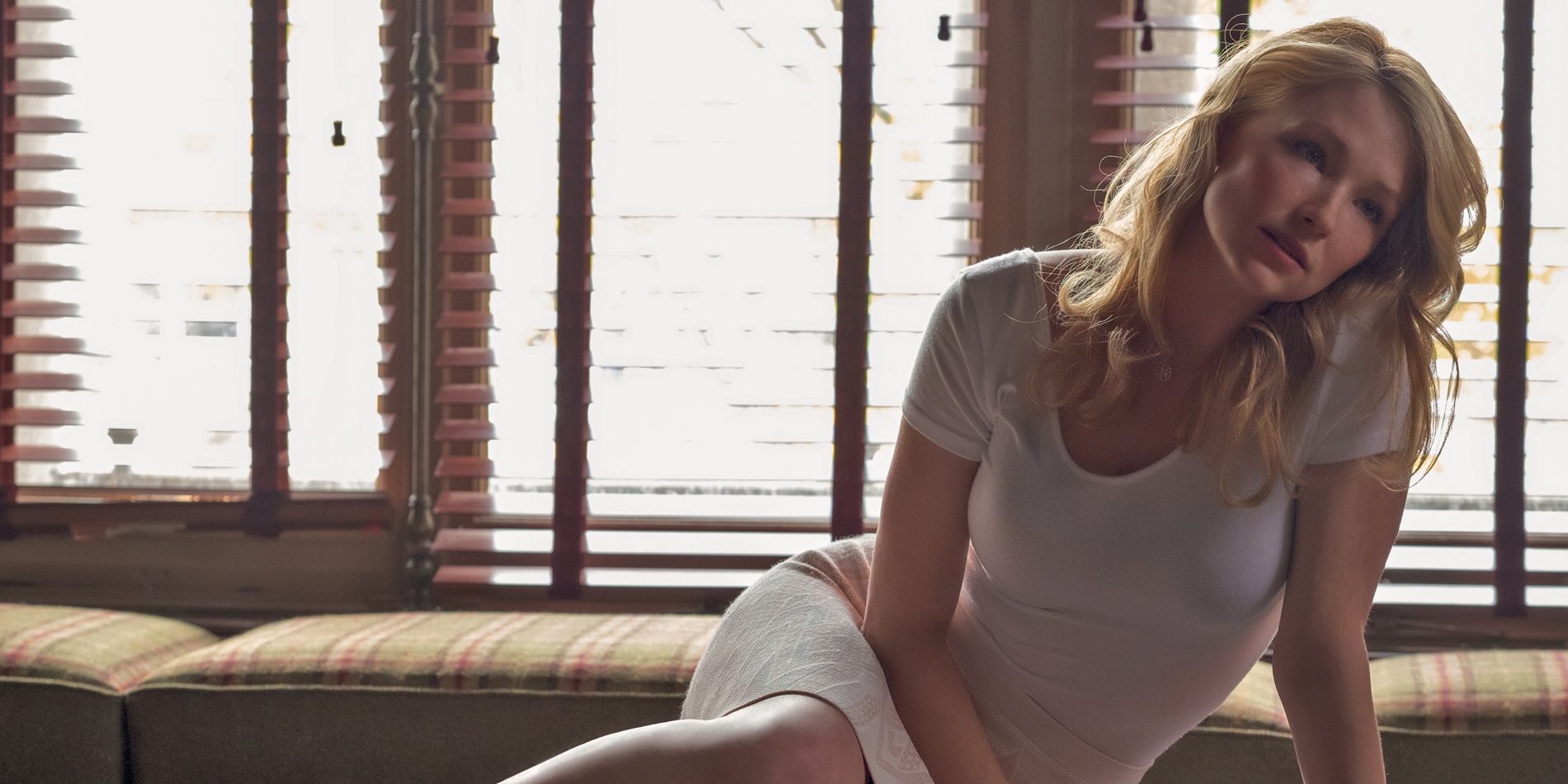Despite a strong performance by Emily Blunt, The Girl on the Train is a middling thriller without much to offer.
Following her divorce from her husband Tom Watson (Justin Theroux), Rachel Watson (Emily Blunt) spends her days riding the train to New York back and forth, drowning her sorrows in a copious amount of alcohol. As she passes the houses that sit by the train tracks, Rachel imagines what the lives of others are like. In particular, she has become fond of Megan Hipwell (Haley Bennett) and her husband Scott (Luke Evans), who Rachel believes embody the true love she has sought out all her life. Unbeknownst to Rachel, Megan has become dissatisfied with her life (and Scott's frequent pleas to have a baby) and quits her job as a nanny for Tom and his new wife Anna (Rebecca Ferguson) to start anew.
One day on the train, Rachel witnesses Megan on her porch embracing another man, her therapist Kamal Abdic (Edgar Ramírez). Without knowing the full context, Rachel falls into a drunken rage, furious that Megan would betray her husband. On her way home that night, Rachel stops at Megan's neighborhood looking for an outlet to voice her frustrations. Tracking Megan to a nearby tunnel, Rachel blacks out and wakes up the next morning bruised and bloodied. Learning that Megan has disappeared, Rachel has to unravel the mystery and prove her innocence.
The Girl on the Train is based on the best-selling novel of the same name by Paula Hawkins. The film's marketing materials have drawn comparisons to David Fincher's Gone Girl due to some surface-level similarities (a woman goes missing, the main character is seen as a primary suspect), and the hope was that the movie could replicate Gone Girl's earlier success of being a captivating story that raised fascinating discussion points. Unfortunately that isn't the case. Despite a strong performance by Emily Blunt, The Girl on the Train is a middling thriller without much to offer.
A majority of the film's problems lie in the screenplay by Erin Cressida Wilson. The first act, which sets up the main trio of Rachel, Megan, and Anna, is written in such a way that the characters mostly come across as cold and emotionally distant, making it difficult for some audience members to latch on. It also takes a while for the main story to get going, as the film meanders and plods along in its opening moments. The sluggish pacing makes The Girl on the Train feel boring at times, when viewers should be getting ready for an intriguing whodunit plot. By the time the case surrounding Megan's disappearance comes into focus, it's a case of too little too late. It also doesn't help matters that some of the various twists are fairly obvious and don't add much of substance.
The script also periodically jumps back and forth through time, which gives the movie a choppy feel (as opposed to being a cohesive narrative). While they are designed to flesh out the characters and their situations further, only select ones (including a tragedy from earlier in Megan's life) are enlightening enough to be warranted. The key issue with the flashbacks is that the main players in the story aren't well-realized to begin with, and skipping around the timeline doesn't do much in the way of making them more intriguing figures. Taylor tries to use the flashbacks as buildup for major revelations, but the payoffs are not very satisfying. Poor editing contributes to the pacing woes, and the film's sub-two hour runtime feels much longer than it really is.
Of the film's assets, Blunt is the clear standout as Rachel. The actress goes somewhat against type by playing a character who is not meant to be likable, and she delivers one of the better performances of her career. Blunt injects a bit of emotional vulnerability in her turn, which allows the character to feel more rounded and not just a caricature. Her Rachel is a broken woman who had her life stripped away. Blunt may come across as too miserable for some moviegoers' tastes, but she does a fine job in the role and has a couple of moments where she owns the screen. Her arc isn't the best this genre has seen, but that's more of a product of the writing than the acting.
The same cannot be said for Blunt's co-stars. Nearly every member of the supporting cast comes off as dull and lifeless, a result of either poor direction by Tate Taylor (The Help) or the thin sketches of the script. Dark characters can be interesting to watch on-screen, but none of the ones here (with the exception of perhaps Rachel) are particularly engaging. The closest thing to a highlight here is Evans playing a seemingly concerned husband, but earlier segments of the movie paint him in such an unflattering manner, it's difficult for the audience to completely buy in. Outside of Blunt, everyone seems to be going through the motions, which like the editing and writing, makes the film a slog to watch.
In the end, The Girl on the Train is a poor adaptation of a well-received novel that illustrates not all books are destined for the big screen. Taylor crafts a suitably moody atmosphere for this tale, but moviegoers may not be able to shake the feeling that he's doing a David Fincher impression as opposed to making the material his own. A weak script and uneven pacing are what ultimately derails this film. Fans of the book curious to see how it translates to another medium may be interested, but the uninitiated can wait for home media.
Trailer
The Girl on the Train is now playing in U.S. theaters. It runs 112 minutes and is rated R for violence, sexual content, language, and nudity.
Let us know what you thought of the film in the comments!




